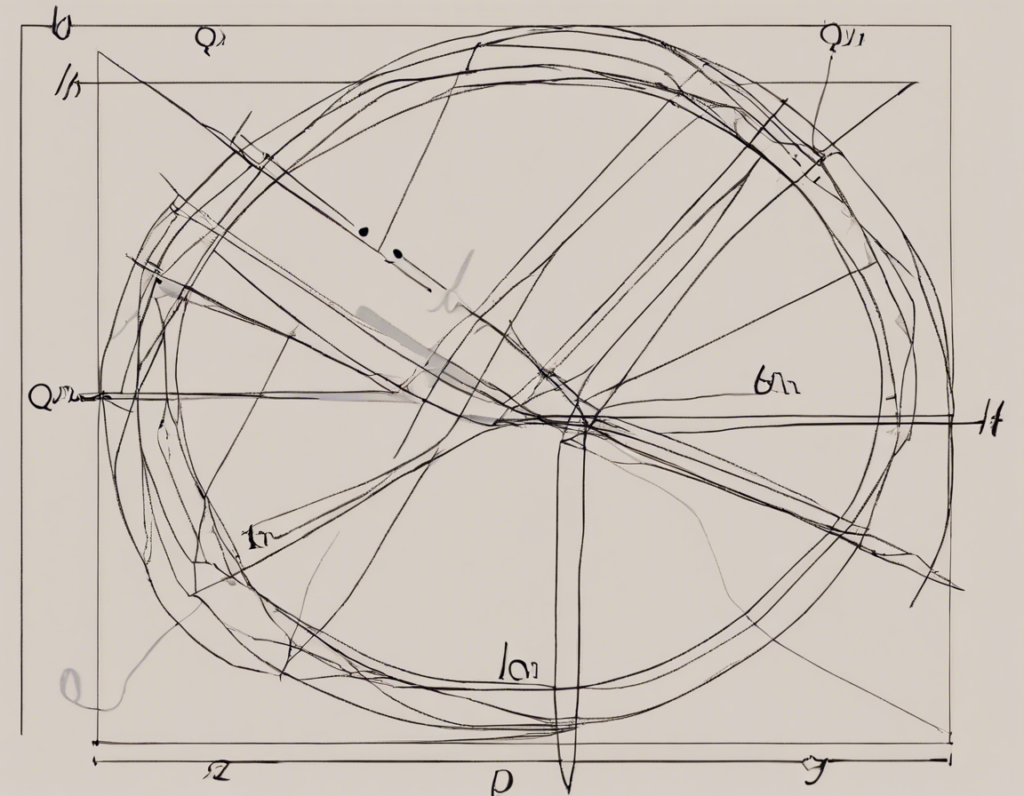When dealing with circles, chords are crucial geometric elements that connect any two points on the circle’s circumference. The chord length represents the straight-line distance between these two points, passing through the circle’s interior. In this discussion, we will delve into the concept of a chord length of 8 cm in a circle, exploring its implications and applications in geometry.
Understanding Chords in Circles
In geometry, a chord is defined as a line segment whose endpoints lie on the circle. A chord that passes through the center of the circle is called a diameter, which also happens to be the longest chord possible in a circle. On the other hand, a chord that does not pass through the center is termed simply as a chord.
Chord Length 8 cm: Implications
Given a chord length of 8 cm in a circle, several geometric properties and relationships become relevant:
-
Relation to Diameter: A chord with a length of 8 cm can be either greater or smaller than the diameter of the circle, depending on the circle’s size. If the diameter is known to be greater than 8 cm, then the chord must be a minor chord. Conversely, if the diameter is less than 8 cm, the chord is a major chord of the circle.
-
Perpendicular Bisector: The chord with a length of 8 cm serves as a base for construction of the perpendicular bisector. The perpendicular bisector of a chord passes through the center of the circle and divides the chord into two equal segments.
-
Circle Segments: The chord divides the circle into two segments: the minor segment enclosed by the chord and the circle’s arc, and the major segment that lies on the opposite side of the circle.
Properties of Chords in Circles
Several essential properties characterize chords and their relationships in circles:
1. Perpendicularity with Diameter
- Chords and Diameters: Any chord that passes through the center of the circle is always perpendicular to the circle’s diameter.
2. Chord Midpoint
- Midpoint Theorem: The line segment joining the midpoint of a chord to the center of the circle is perpendicular to the chord, and it bisects the chord into two equal halves.
3. Circle Theorems
- Circle Angle Theorems: The angle subtended by a chord at the center of the circle is twice the angle subtended by the same chord at the circle’s circumference.
Calculating Chord Lengths
To determine the length of a chord in a circle with a known radius, various methods can be employed, including application of the Pythagorean Theorem, trigonometric functions, or properties of right-angled triangles. In the case of a chord length of 8 cm, additional information such as the circle’s radius or diameter is typically needed to solve for other geometric parameters accurately.
Frequently Asked Questions (FAQs)
- Can a chord of a circle be longer than the circle’s diameter?
-
No, the diameter of a circle is always longer than any chord within the circle.
-
How is the length of a chord related to the circle’s radius?
-
The length of a chord is influenced by the circle’s radius, with longer chords present in circles with larger radii.
-
What is the significance of perpendicular bisectors in relation to chords?
-
Perpendicular bisectors of chords play a crucial role in geometry by being perpendicular to the chord and passing through the circle’s center.
-
How can one calculate the length of a chord without knowing the circle’s radius?
-
Without the radius, the calculation of a chord’s length may require additional geometric information such as the central angle or the distance from the chord to the center.
-
Are all chords in a circle of equal length?
- No, chords in a circle can vary in length, with only the diameter being consistent in size for different chords.
